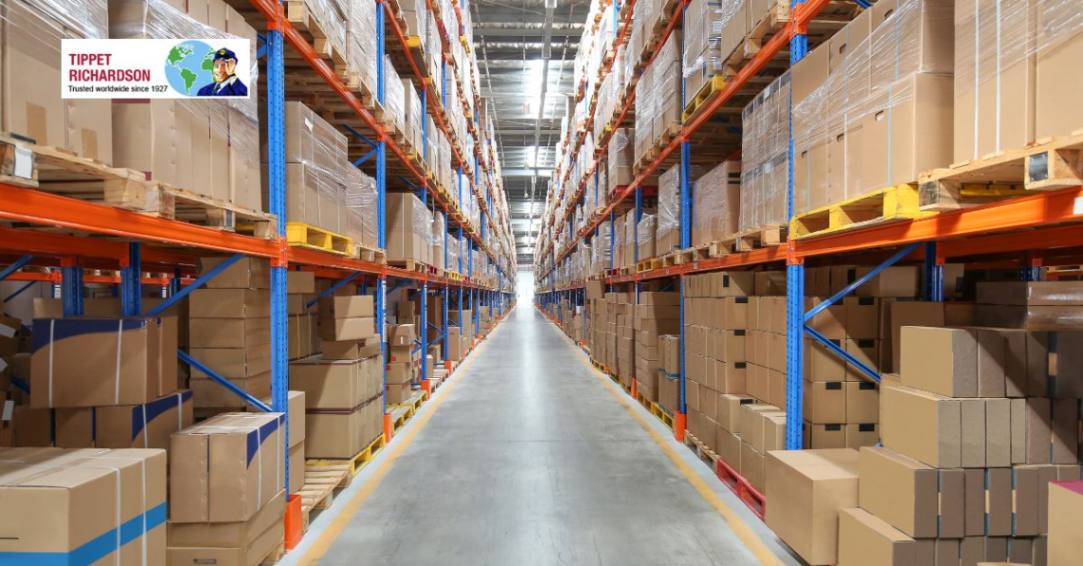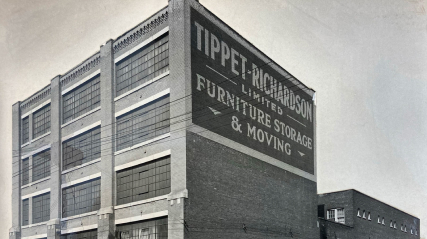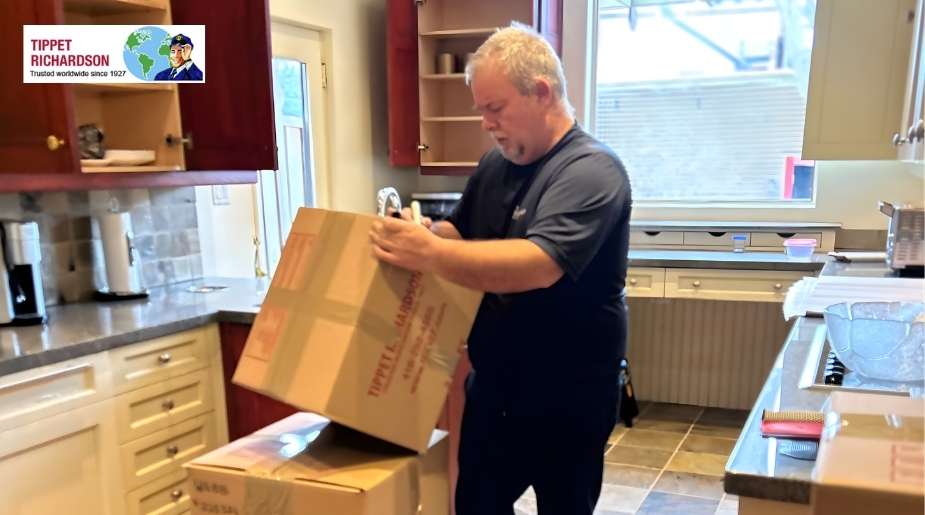In the data-driven economy, every invoice, e-mail, CAD drawing, and backup tape your organization produces must be protected, indexed, and retrievable on demand. Without robust records management solutions, those assets can turn into liabilities—clogging office space, slowing audits, and exposing you to privacy fines. For Canadian organizations, and especially those in the Greater Toronto Area (GTA), the stakes are magnified by a dense web of federal and provincial regulations and by real-estate costs that make on-site storage painfully expensive.
That is why more firms are turning to trusted local specialists like Tippet Richardson’s Records Management Services, which blend off-site records management, secure document storage, media storage solutions, and a full-featured records management system into one seamless program.
This Guide demystifies those options, explains the business and compliance drivers, and provides a step-by-step framework for selecting the right Toronto-based partner.
1. Understanding Modern Records Management Solutions
What Counts as a Records Management Solution?
A records management solution is the integrated mix of technology, policy, people, and facilities that governs how physical and digital records are created, classified, stored, accessed, and finally destroyed. It spans cloud repositories, barcode-tracked warehouse cartons, and the software that synchronizes the two into a single, searchable records management system. Without that backbone, retention schedules drift, audits stall, and staff waste hours hunting for files.
Core Components: Capture, Storage, Retrieval, Disposition
Every best-practice framework (ISO 15489, ARMA’s Generally Accepted Recordkeeping Principles) identifies four pillars:
- Capture / Create : scanning, e-mail journaling, e-signature archiving.
- Secure Document Storage : encrypted cloud folders, fire-suppressed warehouse bays.
- Rapid Retrieval : indexed search, scan-on-demand, role-based web portals.
- Disposition : certified shredding, magnetic-media degaussing, and immutable certificates of destruction.
Compliance Pressures Inside Canada
Federal PIPEDA, Ontario PHIPA, Québec Bill 64, and sector rules from OSFI to FINTRAC dictate strict retention and privacy safeguards. Failing to automate these inside your records management system can trigger per-record fines and court sanctions. A vendor who knows the Canadian landscape—and maintains all data within the country—simplifies sovereignty concerns.
Cost & Productivity Statistics
Industry studies show that organizations reclaim 25–40 % of information-handling costs after deploying off-site, technology-enabled records management solutions. Savings flow from reduced rent, faster audits, and fewer breach penalties.
Digital Transformation & the Hybrid Reality
Despite “paperless office” slogans, legal originals, lab notebooks, and microfilm still require physical archiving. Modern solutions therefore merge digitization, searchable metadata, and on-demand retrieval of the paper source, giving users the speed of the cloud with the legal defensibility of hard-copy evidence.
2. The Business Case for Off-Site Records Management
The Hidden Risks of On-Site Storage
File rooms are magnets for floods, fires, and unauthorized browsing. They also violate the “least-privilege” principle when every staffer with a keycard can wander the aisles. Shifting dormant files to a guarded, purpose-built facility neutralizes those threats.
How Off-Site Storage Enhances Security
Leading Toronto facilities use multi-factor badge entry, CCTV, motion sensors, and staff background checks—protections that far exceed conventional office suites. Add climate-control, fire suppression, and real-time barcode scanning, and you gain a security posture difficult to replicate in-house.
Space and Cost Optimization
At CAD $80–$100 per sq ft of downtown space, a 300-sq-ft file room can bleed CAD $30,000 annually. Off-site vaults charge pennies per carton per month, freeing budget for revenue activities.
Disaster Recovery & Business Continuity
A geographically separate warehouse acts as a “hot spare” for physical evidence. Many partners rotate backup tapes and drives through fire-resistant vaults, slotting neatly into your broader media-storage or IT disaster-recovery plan.
Seamless Integration with Your Records Management System
API or SFTP feeds push carton status, retrieval requests, and certificates of destruction directly into the dashboard of your records management system, eliminating spreadsheets and phone-tag. The result is end-to-end chain of custody at a glance.
3. Secure Document Storage: What to Demand from a Vendor
Physical & Logical Security Layers
A true secure document storage program starts with perimeter fencing, badge-controlled doors, and 24 / 7 CCTV. Inside, records ride locked cages or high-density shelving under zoned motion sensors. Logical controls add encryption at rest, VPN-less SSL portals, and immutable audit trails.
Climate Control & Environmental Monitoring
Paper warps above 65 % relative humidity and magnetic media loses signal above 26 °C. Vendors should offer temperature- and humidity-controlled bays with sensor telemetry feeding automated alerts.
Barcode Tracking & Chain of Custody
Every box, file, or tape receives a unique barcode scanned at intake, movement, and destruction. Your portal should show GPS-stamped audit logs for each event, satisfying ISO and NAID auditors with a single click.
Rapid Retrieval & Scan-on-Demand
Waiting days for a contract defeats the purpose of strong governance. Top Toronto providers guarantee same-day or next-day deliveries, plus scan-on-demand services that digitize and upload PDFs straight into your records management system within hours.
Certifications & Compliance Frameworks
Look for NAID AAA, PRISM Privacy+, and SOC 2-Type II reports. These attestations prove that a vendor’s secure document storage controls meet or surpass Canadian privacy expectations.
4. Media Storage Solutions: Safeguarding Digital Assets
Why Digital Media Needs Special Treatment
Magnetic tape, SSDs, microfilm, and optical platters degrade faster than paper when exposed to heat, humidity, or electromagnetic fields. A purpose-built media storage solution uses fire-rated vaults, anti-static flooring, and strict access logs to preserve usable backups.
Fire-Resistant, Climate-Controlled Vaults
Vendors such as Tippet Richardson house media in vaults engineered to survive extreme temperature spikes and equipped with inert-gas fire suppression.
Scheduled Rotation & Backup Management
Off-site movers follow chain-of-custody protocols to swap fresh tapes weekly or monthly, keeping disaster-recovery points current without over-exposing media to transit shock.
Ensuring Data Integrity & Testing
Annual restore-test programs confirm that tapes are readable before you need them. Your vendor should log test results into the same records management system that tracks physical cartons.
Case Study: A GTA Bank’s Backup Transformation
A mid-tier Toronto bank cut recovery-time-objective (RTO) from 18 hours to 4 by migrating 4,000 LTO cartridges into Tippet Richardson’s vault, leveraging scan-on-demand restores and quarterly test-cycle reports. Cost per protected terabyte fell by 31 % in year one.
5. How to Evaluate Records Management Vendors in Toronto
The 12-Point Selection Checklist
- Canadian data sovereignty & local facilities
- NAID, PRISM, SOC 2 certifications
- 24 / 7 CCTV and multi-factor entry
- Fire-suppressed, climate-controlled vaults
- Barcode or RFID chain of custody
- Cloud portal & open API integrations
- Guaranteed retrieval turnaround (SLA)
- Document imaging & scan-on-demand
- Certified destruction with auditable proof
- Regulatory expertise (PIPEDA, PHIPA, OSFI)
- Insurance coverage & indemnification clauses
- Transparent, line-item pricing
The Value of Local Expertise
Toronto’s mix of banking, healthcare, and tech demands sector-specific controls. A local team understands GTA traffic patterns, same-day courier logistics, and provincial privacy nuances better than a cross-border conglomerate.
Technology Integration & Future-Proofing
Your records management system should sync seamlessly with the vendor’s inventory back end. Look for REST APIs, SFTP feeds, and SSO via Azure AD or Okta to streamline provisioning and revocation.
Audit Trails, Reporting, and Dashboards
Executive dashboards should display carton counts, retention timers, pending destruction, and retrieval SLAs in near real time. Exportable CSV or JSON feeds help satisfy auditors quickly.
Assessing Customer Support
Evaluate average call-back times, named account managers, and emergency protocols. A 24-hour hotline is table stakes when litigation hold or disaster strikes at 3 a.m.
6. Spotlight on Tippet Richardson: A Century of Secure Records
Heritage & Reputation
Founded in 1927 and offering dedicated records management solutions since the 1960s, Tippet Richardson combines nearly a century of logistics mastery with modern information-governance expertise.
Full-Spectrum Service Set
The company’s Toronto campus delivers off-site records management, secure document storage, media storage solutions, digital imaging, cloud hosting, and NAID-certified destruction—all orchestrated by a barcode-driven records management system.
Advanced Technology & Barcode Precision
Every carton and media case is tagged at intake. Clients log in to see GPS-stamped movements, schedule pickups, or request scan-on-demand files. No phone calls, no spreadsheets—just real-time transparency.
Compliance & Certifications
With SOC 2-Type II controls, PRISM Privacy+ membership, and procedures aligned to ISO 27001, Tippet Richardson’s environment meets or exceeds Canadian privacy statutes and global best practice.
Client Outcomes
Recent engagements show 35 % real-estate savings, 53 % faster audit prep, and zero chain-of-custody exceptions across 2.3 million securely stored documents.
7. Implementation Roadmap: From Chaos to Control
Discovery & Needs Assessment
Start with a file census—what you store, where, in what formats, under which retention codes. Your vendor will translate that inventory into a taxonomy for the new records management system.
Secure Chain-of-Custody Transfer
Barcoded cartons ride GPS-tracked vehicles to the warehouse. As soon as the truck leaves your dock, the boxes appear in your portal with status “In Transit,” then “Received—Shelved.” Paper receipts become a thing of the past.
Digitization & Metadata Enhancement
High-speed scanners convert active files to PDF/A. Optical character recognition and data-entry teams enrich metadata, boosting keyword search success from 60 % to 95 % on average.
Training & Change Management
Short task-focused videos show staff how to request pickups or downloads. Lunch-and-learn sessions de-mystify retention codes. Gamified dashboards track adoption to keep momentum high.
Continuous Improvement & KPI Reviews
Quarterly meetings evaluate retrieval lag, destruction backlogs, and regulatory updates. Your partner tweaks rules, shelving strategy, or API mappings to keep the system agile.
Read More: Why Records Management Services Are Important for Business
Conclusion
In a market defined by escalating privacy rules, hybrid work, and real-estate pressure, world-class records management solutions are no longer optional—they are a strategic advantage. By combining off-site records management, secure document storage, media storage solutions, and a cloud-integrated records management system, Toronto businesses can reduce costs, boost compliance, and free staff to focus on growth.
Selecting the right partner starts with clear criteria—and ends with proven expertise. For organizations across Canada, Tippet Richardson ticks every box, delivering a century-deep pedigree blended with the latest technology. Embrace a future-ready program today, and turn yesterday’s paper mountain into tomorrow’s strategic asset.





